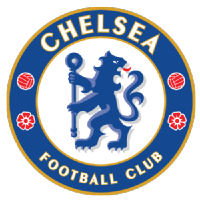When a team gets worse or better from season to season, sometimes the answer is complicated.
Say it lost that fullback who was really good at tucking into the midfield, and when he’s not able to tuck into the midfield, one of the free No. 8s can’t push forward, and when he can’t push forward, there’s no one to occupy the space between the opposition fullback and center back. And when there’s no one to do that, the winger doesn’t have as much space. And without that much space, the winger isn’t getting as many touches. And when the winger isn’t getting as many touches, it makes it look like the striker is the cause of the team’s problems because he’s not scoring any goals, because he’s not getting as much service as he used to.
But even in that cascading example, there is something of a root cause: An important player is no longer playing or he’s not playing as much as he used to. Either way, the most common explanation for a team’s improvement or decline is a change in personnel: Someone got hurt, someone got healthy, someone was acquired, someone was sent somewhere else.
Twelve games into the Premier League season, we have enough information to finally start making some tentative conclusions about the quality of the teams as compared to last season. Let’s first take a look at which teams appear to be fundamentally better or worse than last season. Then we’ll see if we can connect it to whomever is playing more or less than they were a season ago.
Which Premier League teams are better? Which are worse?
For this exercise, we’re ignoring the three promoted teams because there’s no previous season to compare them to. On top of that, all of the promoted teams are quite bad. It wouldn’t be surprising if one of them managed to stay up — soccer is weird like that — but the least surprising outcome at the bottom of the table would be Burnley, Sheffield United, and Luton Town all going right back down to the Championship.
Purely from a points-per-game perspective, this is how all 17 other teams compare — ranked, in order, by how much they’ve improved from last season:
1) Tottenham: 0.59 points better
2) Liverpool: 0.49
3) Aston Villa: 0.47
4) West Ham: 0.37
5) Everton: 0.22
T-6) Chelsea: 0.17
T-6) Wolverhampton: 0.17
8) Nottingham Forest: 0.08
9) Crystal Palace: 0.07
10) Arsenal: 0.04
11) Manchester City: -0.01
12) Brighton: -0.05
13) Newcastle: -0.2
T-14) Brentford: -0.22
T-14) Manchester United: -0.22
16) Bournemouth: -0.28
17) Fulham: -0.38
Given that we’ve only played 12 games and team schedules remain a little lopsided, it feels fair to use an improvement or a decline of 0.2 points per game as the cutoff for something material. Over the course of a full season, that adds up to about eight points. So, Tottenham, Liverpool, Aston Villa, West Ham, and Everton are the big improvers from last season, while Newcastle, Brentford, Manchester United, Bournemouth, and Fulham have been the biggest disappointments.
Of course, points only tell part of the story. For a better picture of a team’s fundamental performance level, we’d want to see the quality of the chances it is creating and compare that to the quality of the chances it is conceding. We’d also want to strip out penalties — plenty of research suggests that teams don’t have inherent, sustainable qualities that allow them to draw more penalties — and we’d want to only look at minutes played at even strength. In other words, we’d want to look at non-penalty expected goals differential per 90 minutes, adjusted to account only for minutes when both teams had the same number of players on the field. (Going forward, we’ll call it the “adjusted xG differential.”)
Here’s how all 20 teams compare through 12 games:

Want to get excited and/or annoyed? The first game back after the international break: Liverpool travels to Manchester City.
Who have been the most impactful players in the Premier League this season?
Now that we’ve established which teams are improving, we can look at the players who have gotten on the field more to explain why these teams have had a change in fortunes from last season.
 Liverpool: Dominik Szoboszlai and Alexis Mac Allister
Liverpool: Dominik Szoboszlai and Alexis Mac Allister
We’ll start with Liverpool. I’m not even sure you need to look at those adjusted underlying numbers to understand that manager Jurgen Klopp has this team back near the level of all of the Liverpool teams before last season. Rather, I think this sums it up pretty simply: They have the second-best goal differential and the second-most points in the league despite already accruing four red cards.
But by those underlying numbers, they’re also one of five teams to increase their adjusted xG differential by at least 0.4 from last season (0.42). Before digging into this season, we need to quickly acknowledge that Liverpool were back to their best for the last 10 or so games last season too. So, some of the improvement we’re seeing this season extends back to last season, before Jordan Henderson and Fabinho went off to Saudi Arabia. That said, the two biggest changes from last season are the two players who replaced Henderson and Fabinho: Dominik Szoboszlai and Alexis Mac Allister.
Szoboszlai, 23, of Hungary, has been fantastic, doing a little bit of everything. He seems like one of those rare players who combines an elite work rate with elite technical ability, and he has played 98% of the available minutes so far this season.
Mac Allister, 24, of Argentina, hasn’t quite been as ever-present, but he has still been out there 82% of the time. Although he’s not a traditional defensive midfielder, by any means, to only focus on that would ignore the upgrade he provides on Fabinho in possession.
It’s worth noting that Luis Díaz, Joël Matip, and Diogo Jota have all increased their minutes by at least 20 percentage points, so they deserve honorable mentions.
 Everton: Jarrad Branthwaite, James Garner and Abdoulaye Doucouré
Everton: Jarrad Branthwaite, James Garner and Abdoulaye Doucouré
For all of Liverpool’s improvement this season, they’re not even the most improved team in their own city. Everton’s adjusted xG differential has improved by nearly a full goal (0.93) per 90 minutes.
Once again, I think a bunch of the improvement extends back to last season, when the club replaced Frank Lampard with Sean Dyche. I’m confident in saying this because the second-most improved team also improved after replacing Lampard as their manager. Great midfielder! Terrible coach. However, there have been significant personnel changes for Everton from last season, and the team is better this season than it was last season under Dyche too.
After spending last season on loan with PSV Eindhoven, 21-year-old center back Jarrad Branthwaite has featured in 83% of the minutes so far this season. The other two massive minutes increasers are a pair of midfielders.
James Garner played 27% of the minutes last season; he’s up to 91% in 2023-24. While perhaps that’s a case of a player improving and his coach beginning to trust him more, the same can’t be said of 30-year-old Abdoulaye Doucouré, who has leapt up from 45% of the minutes last season to 96% this season. For a team that is somewhat lacking in attacking talent, Doucouré’s ability to break into the box and create havoc, opportunities, and space for his teammates has been one of the bigger drivers behind Everton’s massive improvement.
 Chelsea: Take your pick
Chelsea: Take your pick
Then there’s Chelsea, who many might quibble with as one of the “most improved” given their meager record, but their adjusted xG differential is improved by 0.62 from last season. Plus, they’re undefeated against the current top four of Man City, Liverpool, Arsenal, and Tottenham. Unfortunately, we can’t really pinpoint any one or two key changes because they have so many new players.
Seven players who weren’t on the team last season have played at least 50% of the available minutes this season:
- Robert Sánchez (100%)
- Axel Disasi (90%)
- Levi Colwill (87%)
- Nico Jackson (79%)
- Moisés Caicedo (74%)
- Cole Palmer (74%)
- Malo Gusto (50%)
On top of that, four guys who were on the team last season also have increased their minutes share by 30 percentage points:
- Conor Gallagher (49-point increase)
- Enzo Fernández (38)
- Raheem Sterling (36)
- Thiago Silva (31)
Mauricio Pochettino is a massive upgrade on Frank Lampard, to be sure. But the biggest reason this team is so much better than last season is that, on a given weekend, the squad taking the field is almost totally different from what we saw on average last season.
 Wolverhampton: Matheus Cunha, Pedro Neto and Mario Lemina
Wolverhampton: Matheus Cunha, Pedro Neto and Mario Lemina
Lastly, both Wolves and Aston Villa have improved their adjusted xG differential by roughly the same amount as Liverpool. And I think the pair has similar reasons for why.
With Wolves, their three biggest minutes gainers are Matheus Cunha (from 28% up to 92), Pedro Neto (from 28% up to 82), and Mario Lemina (from 38% up to 91).
Wolves manager Gary O’Neill has done a much better job than Julen Lopetegui, mainly because he’s getting his better players on the field more often. Both Cunha and Lemina have Champions League pedigrees, while Pedro Neto was a key contributor for Wolves back when they were challenging for Europe every season. He’d been mostly injured for the past couple seasons.
 Aston Villa: Pau Torres, Moussa Diaby and Lucas Digne
Aston Villa: Pau Torres, Moussa Diaby and Lucas Digne
With Villa, it’s an even simpler story. Pau Torres and Moussa Diaby have played in the Champions League and are Spanish and French internationals, they were both signed over the summer, and they have, respectively, played 97% and 88% of the minutes so far this season. Meanwhile, Lucas Digne, another player with lots of Champions League experience along with many caps with France, also has massively increased his minutes load (99%, up from 44%) as compared to last season.
I’m going to let you in on a little secret here: When you can figure out a way to get good players to play more often, you tend to win more games. It’s easy to trace the improving fortunes of teams to the players who have seen increased playing time.
Subtraction by subtraction: The most impactful absences
So if getting good players on the field is helping teams play better as compared to last season, what do we make of teams that look worse?
Well, it’s the opposite problem: They haven’t been able to get good players on the field, and their troubles can be explained by the absences of players who have made the biggest impact.
 Manchester United: Luke Shaw and Jadon Sancho
Manchester United: Luke Shaw and Jadon Sancho
Thanks to their inability to draw matches, Manchester United’s awful, crisis season has left them … in sixth place, just five points out of fourth. But for the first time in a long time, no one seems fooled by United’s results anymore. Yes, they’re sixth, but they have a negative goal differential. Stranger things have happened, but something tells me that United won’t be able to continue to challenge for top four while also conceding more goals than they score.
By our adjusted xG method, United have declined year over year more than any team in the league — from plus-0.47 last season, to minus-0.04 this season. The drop-off is nearly double that of any other team in the league.
Two players have dropped off by at least 30 percentage points since last season: Luke Shaw (down to 17% from 75%) and Jadon Sancho (down to 7% from 50%). There are very different reasons for each one.
Shaw injured his leg in August, and he hasn’t played since. Last season, he was one of the better left backs in the world and even filled in at center back here and there. Sancho, meanwhile, continues to be suspended after publicly criticizing Erik ten Hag … after the manager publicly criticized Sancho. While Sancho hasn’t come close to reaching the expectations behind his expensive transfer from Borussia Dortmund in the summer of 2021, he has still been a competent Premier League player when he has played. I’m not sure I’d say the same about some of the club’s other wingers, and Ten Hag has actively chosen to limit an already shallow team’s depth.
Both Raphael Varane and Lisandro Martínez have played significantly fewer minutes this season than last, but neither one was on the field as you might expect last season, either. Varane has dipped down to 32% of the minutes from 54%, while Martínez has dropped to 35% from 62%. Neither minutes decline is anywhere near as big as I would’ve expected, but perhaps there’s been an exponential drop-off when you combine their absences (again, partially driven by managerial decisions, in the case of Varane) with Shaw’s.
 Brighton: Pervis Estupiñán, Moisés Caicedo and Alexis Mac Allister
Brighton: Pervis Estupiñán, Moisés Caicedo and Alexis Mac Allister
The other team with a significant decline in performance is the club that is essentially the polar opposite to Man United: Always-a-step-ahead Brighton.
Roberto De Zerbi & Co. haven’t won a Premier League game since Sept. 24, and their adjusted xG differential has declined by 0.27 goals per 90 minutes. Earlier this season, Pervis Estupiñán looked like the next great fullback. He was progressing the ball and receiving progressive passes at an elite rate, and his non-penalty expected goals+assists rate was better than every attacker on Arsenal. But he hasn’t played since picking up an injury in the 6-1 loss to Aston Villa. His minutes share is down to 46%, after hitting 76% last season.
However, Brighton face the same challenge every season. Due to the linked-up, data-driven structure of the club, they rarely don’t have their best players on the field — unless an injury happens. Their issue, every season, is that they inevitably have to replace their best players. Among outfield players, the biggest departures were two players who have become significant contributors for two of the most improved teams in the league: Alexis Mac Allister (84% of the minutes last season, now at Liverpool) and Moisés Caicedo (92%, now at Chelsea).
If you wanted to call Mac Allister and Caicedo the two most important players in the Premier League so far this season, you wouldn’t be totally wrong. But the larger lesson is that no one — not even perhaps the most well-run club in the Premier League — can consistently lose their best players and still expect to improve.
Credit: Source link